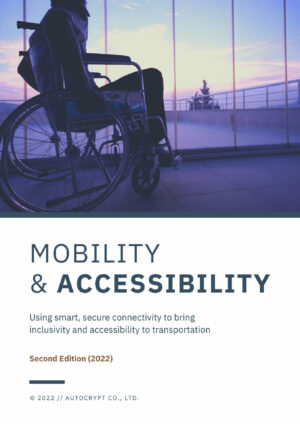White Paper: Mobility & Accessibility
(2nd Edition)
Using smart, secure connectivity to bring inclusivity and accessibility to transportation.
Connectivity in transportation is becoming more and more normalized. From receiving real-time navigation on infotainment systems to reserving a ride via mobility-on-demand (MOD) platforms, many of us already utilize connectivity in our everyday mode of transportation without giving it much thought.
However, the reality of the situation for people with reduced mobility (PRM) is much more difficult and complex. For example, while using a ride-hailing service platform may be as easy as a few touches on a smartphone and walking up to the car, for someone who is blind, or in a wheelchair, these can be daunting tasks.
In 2021, England’s Department for Transport published a report on Disability and Accessibility and stated that in 2019, adults with disabilities made “26% fewer trips and traveled 41% fewer miles” than adults without disabilities.*
This white paper explores the following topics:
- What does it mean to be living with disabilities in a mobility-centric smart city?
- How can connected transportation technology remedy these issues?
- How might AUTOCRYPT’s fleet management and mobility service development solutions serve as the link between the challenges and a fully functioning smart city?
- Case studies of strategic partnerships AUTOCRYPT formed with paratransit non-profits and DRT providers on solving these challenges

